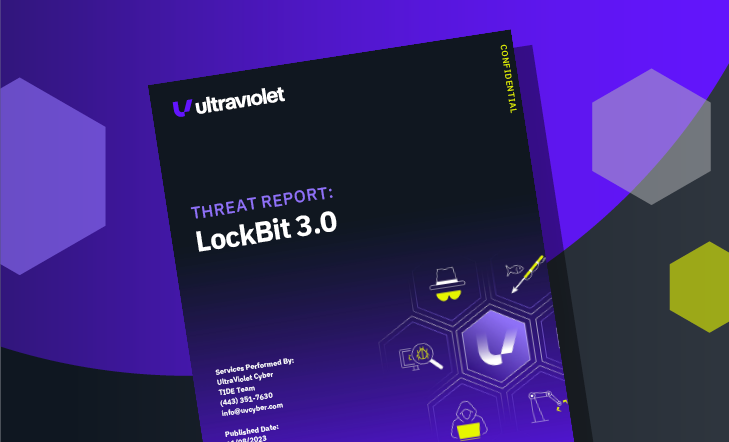
LockBit 3.0
LockBit 3.0 is the latest iteration of a longstanding, very effective, ransomware as a service (RaaS) group. This strain of malware operates by...
Find flaws in web, mobile, and IoT applications.
Expose risks in AWS, Azure, and GCP environments.
Ongoing testing to catch real-world vulnerabilities as they appear.
Live-fire exercises to sharpen detection and response.
Time-boxed security assessments across networks, apps, and infrastructure.
Simulated attacks to test detection and incident response.
Named security experts integrated seamlessly into your team.
Real-time detection and automated threat response.
24x7 monitoring and response by expert analysts.
Nonstop scanning to prioritize and reduce risk.
Ongoing scanning, triage, and compliance tracking.
Unified security platform powering all UV services.
Cross-platform toolkit for advanced red team ops.

Secure your code, infrastructure, and deployment pipelines before attackers exploit them.
September 19, 2025
August 27, 2025
June 26, 2025
UltraViolet Cyber is a practitioner-led MSSP delivering offensive and defensive security to Global 2000 and Federal clients. Built by former intelligence operators, we unify application security, red teaming, detection, and engineering under one roof. Our UV Lens platform replaces silos with integrated, outcome-driven operations.
Kubernetes, being an attractive target for both data theft and computational power exploitation (such as cryptocurrency mining), requires robust security measures. While data theft remains a primary motivation, cyber actors are increasingly drawn to Kubernetes due to its underlying infrastructure, offering ample opportunities for resource theft and potential denial-of-service attacks.
In the Kubernetes ecosystem, Pods serve as the smallest deployable unit, comprising one or more containers. Cyber actors often exploit containers and target Pods as their initial execution environment. Therefore, hardening Pods is essential to raise the bar for exploitation and minimize the impact of successful compromises.
Three major sources of compromise in Kubernetes are supply chain risks, malicious threat actors, and insider threats.
Supply chain risks pose challenges in mitigating vulnerabilities that may arise during the container build cycle or infrastructure acquisition.
Malicious threat actors exploit vulnerabilities and misconfigurations within various components of the Kubernetes architecture, including the control plane, worker nodes, and containerized applications. Meanwhile, insider threats can originate from administrators, users, or even cloud service providers with privileged access to an organization's Kubernetes infrastructure.
To enhance Kubernetes security, it is crucial to implement the following hardening measures and mitigations, as recommended by CISA and NSA:
In support of these security measures, the National Security Agency (NSA) and the Cybersecurity and Infrastructure Security Agency (CISA) have released a comprehensive Cybersecurity Technical Report titled "Kubernetes Hardening Guidance" that provides valuable insights.
Concerning the Control Plane:
Regarding Workloads:
By implementing these recommendations, organizations can bolster their Kubernetes security posture and proactively safeguard their infrastructure against emerging cyber threats. UltraViolet Cyber stands ready to support businesses in achieving seamless security and comprehensive threat defense.
Kubernetes is an open-source container orchestration platform used to automate the deployment, scaling, and management of containerized applications. It allows developers to abstract the underlying infrastructure and provides tools for automating various aspects of application deployment, scaling, and management in a cloud-native environment.
Supply chain risks in Kubernetes are concerning because compromised container images or vulnerable dependencies can propagate across the entire cluster. Attackers can exploit supply chain weaknesses to inject malicious code, leading to data breaches, system compromise, or unauthorized access to critical resources. Proper security measures and image validation are crucial to mitigate these risks.
The Cybersecurity Technical Report: Kubernetes Hardening Guide provides comprehensive guidance on securing Kubernetes clusters. It offers recommendations and best practices to protect against various cyber threats, covering aspects like authentication, authorization, network security, and container runtime security. The report aims to enhance the overall security posture of Kubernetes deployments.
We’re here to help. Get in touch for an initial conversation with one of our security experts and learn more about how UltraViolet Cyber can help you take cyber readiness and resilience to new levels.